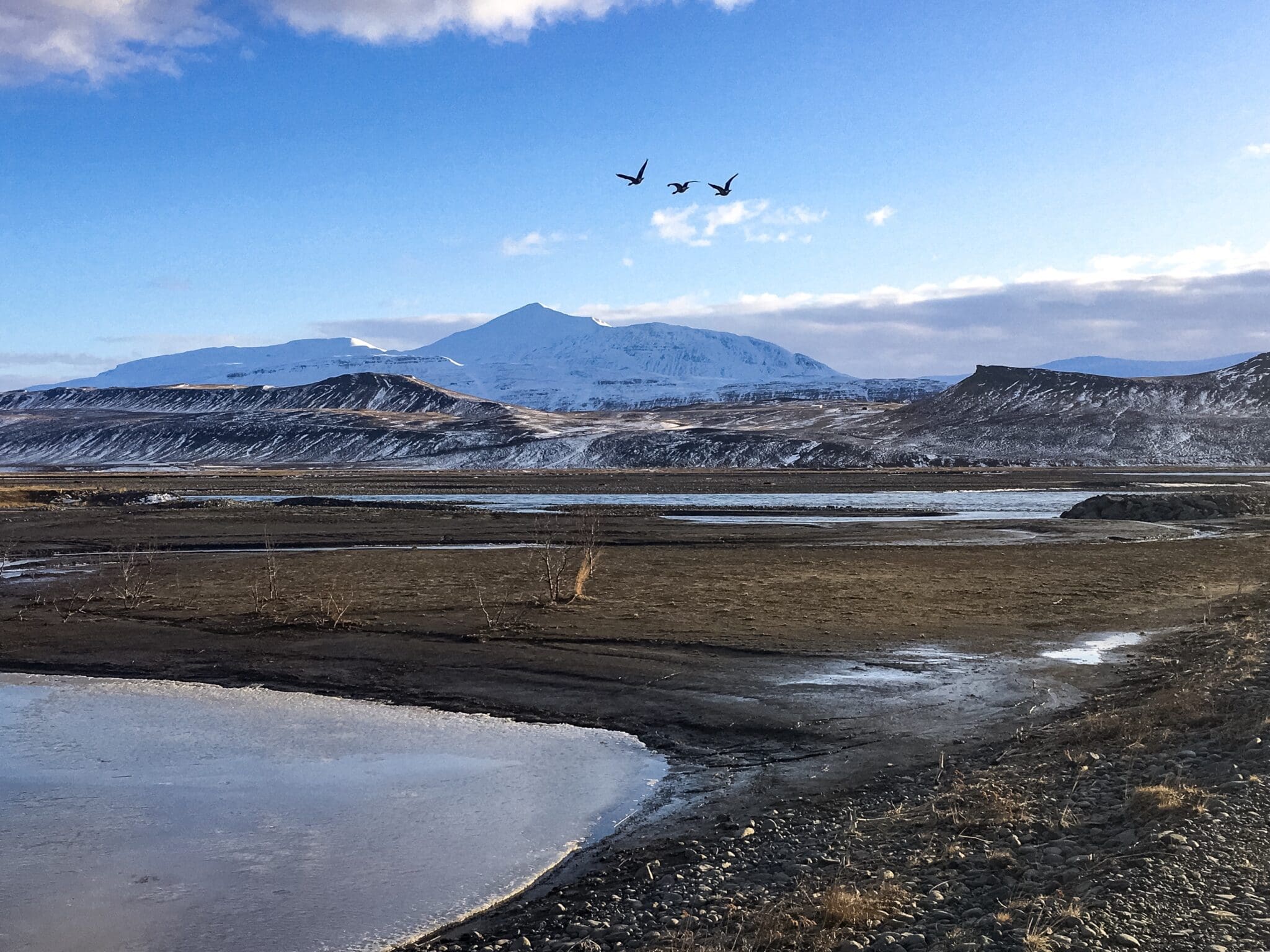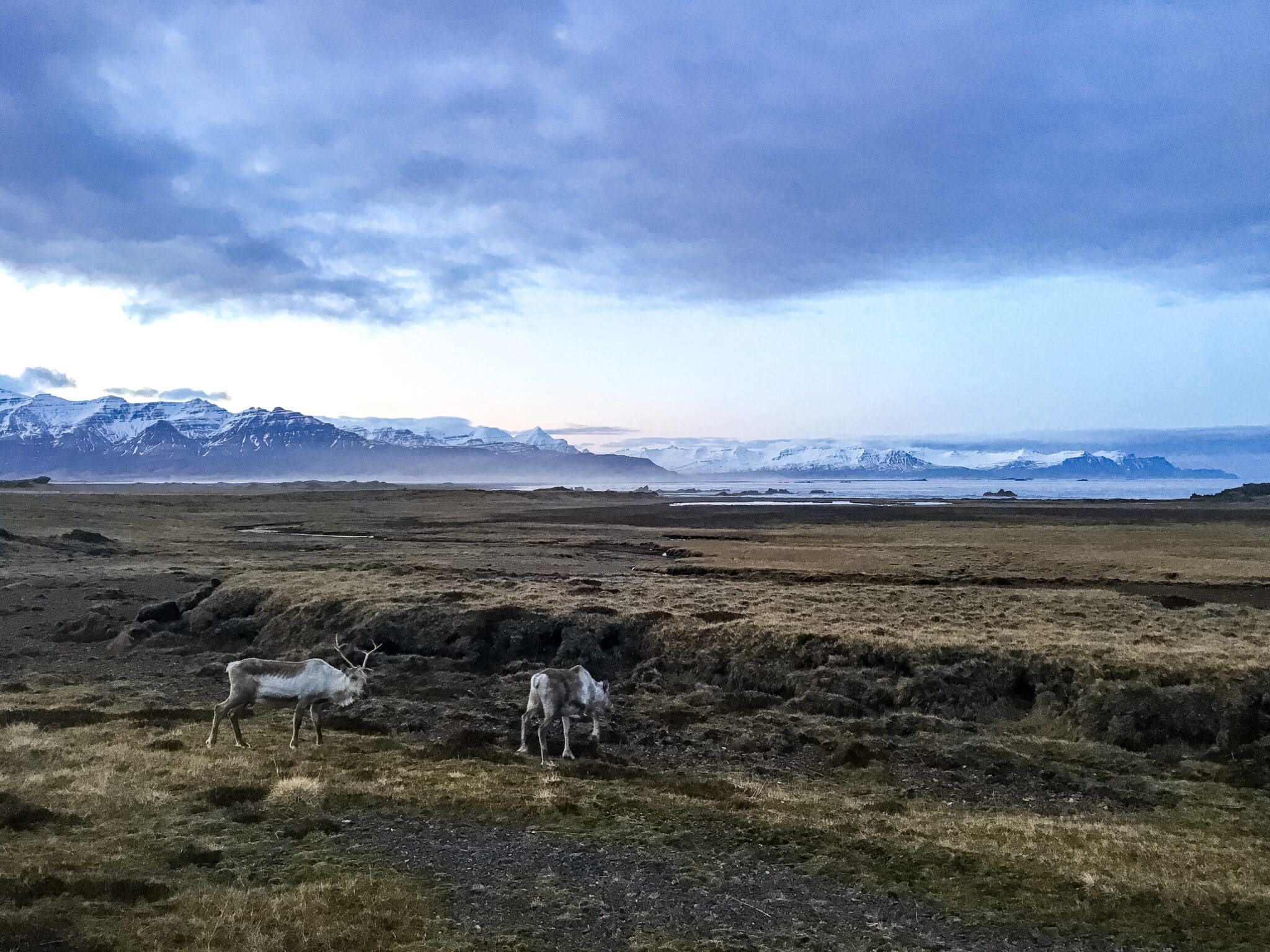Day 4 (Part 2): Krafla & Hverir
In stark contrast to the winter wonderland vibes of Lake Mývatn, is the barren, otherworldly landscapes of Krafla & Hverir. Here you will find bubbling hot pots of sludge spilling over various hues of yellow to red burnt earth. The volatile fumaroles pockmarking the volcanic craters are reminiscent of another planet. It is in this Northern region that you will find scenery far different from the icy snowscapes that Iceland is most known for.
Because of its unique Martian-like terrain, NASA has conducted several geology field trainings called planetary analog campaigns in North Iceland. Since the 1960s, astronauts trained in the area to prepare for moon exploration missions. The extreme environments of Krafla & Hverir mimic those of the moon surface, allowing NASA to test space equipment & procedures as if in outer space.

Please note: This post contains affiliate links.
This means that, at no extra cost to you, I may receive a small commission if you make a purchase through my affiliate link.
You may read my full disclosure policy here.
Krafla & Víti Crater
In the volcanic region of Krafla, you will find the Víti Crater. Its name means “hell” owing to an earlier belief that large craters were gateways to the underworld. However, in the summertime, Víti appears more like heaven as it is often filled with a beautiful opaque teal lake. The crater formed around 1724 as the result of several years of eruptions in Krafla.
There is a circular path around the crater by which you can hike & take amazing panoramic photos. You can also visit the Krafla Power Station to learn more about its history of experimental drilling that started in the 1970’s. Today, this steam-generated power station with its 33 boreholes produces 500 GWh of electricity annually! That’s a whole lot of energy!
“The exposure of Apollo Astronauts to the geology of Iceland contributed greatly to the experience of Apollo astronauts as they prepared for lunar exploration & sampling. All the lunar landing crews benefited from examination of the varied rock assemblages found in glacial outwash channels that resemble the complexities of the lunar surface debris layer. Apollo 11, 12, 15, & 17 explorations of lunar volcanic terrain also gained insights from exposure to the varieties of newly-formed volcanic rocks & structures found in Iceland.”
Harrison Schmitt, Apollo 17 Astronaut

Hverfjall
Hverfjall (aka Hverfell) is a large volcanic crater next to Lake Mývatn that can be distinctively spotted from miles away. Its flat half cone shape was the result of a massive eruption that occurred nearly 2,500 years ago. It measures half a mile in diameter & 460 feet deep, making it one of the largest of its kind in the world!
A steep trail of small basalt gravel leads up to the rim of the crater at 1,300 feet. It takes about 15-20 minutes to hike up the slope & another 15 minutes to walk around its perimeter. In contrast to Víti, there is no pristine lake inside the crater. However, the views that overlook the Mývatn region are definitely worth the arduous trek. We experienced high winds halfway up our hike & thus decided to turn back around.

Námafjall Hverir
Hverir is a geothermal area located in the shadows of the Námafjall volcano. It features gurgling mud pools & steaming fumaroles that spray pungent sulfuric gas in temperatures of up to 400°F. Designated paths allow you to walk very close along the scorched grounds covered by hardy, multi-colored lichen. Námafjall translates to “mountain of mines,” which refers to the abundance of sulfur that was once historically mined in the area for the production of gunpowder. The “rotten egg” stench is actually sulfur hydroxide that forms when cold ground water interacts with magma intrusions. The air is heavy with noxious fumes so prepare to hold your breath!
Game of Thrones fans may reminisce back to season 3, when Samwell Tarly wandered aimlessly through a blizzard in search of his fellow Night’s Watchmen. The impenetrable “snow storm” was actually created by the thick mist that steamed from the geothermal vents of Hverir! Essentially, Iceland provided the natural backdrops, while CGI added the final finishing touches to film the epic scene!

Egilsstaðir
As we departed from Hverir, we immediately noticed the dark clouds & gloomy skies ahead of us. Egilsstaðir is the only major city in East Iceland, but there was not much to explore here. Before heading into the storm, we made sure to fuel up at one of the few gas stations & replenish our snack supply. In truth, we felt uncertain how long it would take us to pass through this desolate countryside. But at least we had enough food to hold us over on our perilous journey!
A Rough Detour Through Öxi Pass
We already acknowledged that the route through East Iceland would have a lot of snow & extreme wind gusts. But we had high anticipation for this drive to take us through beautiful farmland & Atlantic oceanside views, so we braved on. Unfortunately, our GPS redirected us onto Route 939 (aka Öxi Pass) & we were not able to experience any of the Eastern Fjords.
Setting aside our disappointment, our main goal now was to reach Höfn before nightfall. But this proved to be difficult as the backcountry detour was a steep gravel road with numerous potholes & tight corners. The further east we went, the more snowfall we encountered & our visibility eventually went down to zero.
After about an hour of driving blindfolded in the storm, we noticed an SUV approaching us at a dangerously high speed. My husband’s initial response was to pull the camper aside to avoid an unexpected collision. Unfortunately, that poor maneuver slid the camper into a deep side ditch. Our wheels kept spinning out of control, burying the heavy camper further into the snow. For several minutes we just sat there in disbelief, unable to grasp the fact that we were in the middle of nowhere with spotty cellular reception.
As we started to lose hope, the bulldozer we had passed by earlier came rolling up to our rescue! With his massive hooks & chains of steel, the kind samaritan swiftly pulled us out to safety. After we thanked our unsuspected hero wholeheartedly with a generous tip & a handful of Icelandic chocolate-covered licorice, we continued on our journey!
Höfn
Höfn is a charming little harbor town on a small peninsula in southeast Iceland. In fact, Höfn literally means “harbor” & its pronounciation sounds like a hiccup! The town is lesser known as the Lobster Capital of Iceland because of the batches of high value langoustine they catch every year. Despite its small population, Höfn flourishes with its growing fishing industry & tourism in the warmer months.
Angella’s Travel Tips
- During the winter, Route 1 in East Iceland tends to be very icy & treacherous as the roads are far less traveled on. Öxi Pass is a rough mountainous detour that only experienced drivers should attempt.
- Stay updated on sudden road closures by frequently checking the Icelandic Road and Coastal Administration website, ROAD.IS. As we learned the hard way, it is not advisable to solely rely on GPS like Google Maps, especially in remote areas as it won’t be able to guide you towards the “safest route.”
- Be on the lookout for wandering animals such as sheep, horses, & reindeer. From my observations, Icelandic creatures tend to roam aimlessly with no fear of vehicles nor a chance with death. Because they can be unpredictable in their actions, drive with extra caution when approaching any animals on the roads.


mialatoy
June 28, 2019 at 9:49 amAngella- for one, you have SUCH a way with words. Your writing is beautiful. Second, WOW. what an experience. I have never even considered a trip to Iceland, but you have definitely captured the beauty and my curiosity. Travel safely girl!!
Annabel
June 27, 2019 at 8:35 pmYou captured the essence of Iceland wonderfully! I loved my time there and this helped me relive it. So great
Jessica Hughes
June 26, 2019 at 12:26 pmLooks like you guys had a great time! I love reading your travel content, you go on the coolest adventures!
Amanda Martin
June 26, 2019 at 8:54 amIceland is on my bucket list! It’s a whole different world and I’m dying to see it with my own eyes!
erinklema
June 26, 2019 at 7:25 amMy family and I have discussed traveling to Iceland and have debated which time of year is best to visit. I think our fear with a winter visit is exactly what happened to you while driving. Yet, despite the harrowing drive through the mountain pass, your Iceland trip sounds incredible. The otherworldly landscape of North Iceland is far different than the waterfalls, glaciers, and fjords often pictured. I didn’t know NASA astronauts had trained there in anticipation of a lunar landing, but it certainly makes sense after reading your post.
Angella
June 28, 2019 at 9:26 amHi Erin! Yes, it’s so hard to decide which season to visit Iceland! But it all comes down to your top priority attractions & what type of weather you can tolerate. My husband & I enjoy cold weather activities & we were especially excited to see the Northern Lights, which only appear during the colder months. He has a lot of experience driving in icy conditions during our snowboarding trips so we opted to travel via campervan. I may be biased but Iceland just looks more beautiful in its wintry state with its endless snowscapes! But don’t get me wrong, I’m sure Iceland is just as breathtaking in the summertime. If we could go back, we would revisit during the warmer season to experience the wildlife (puffins, whales, seals) that were hiding from us!